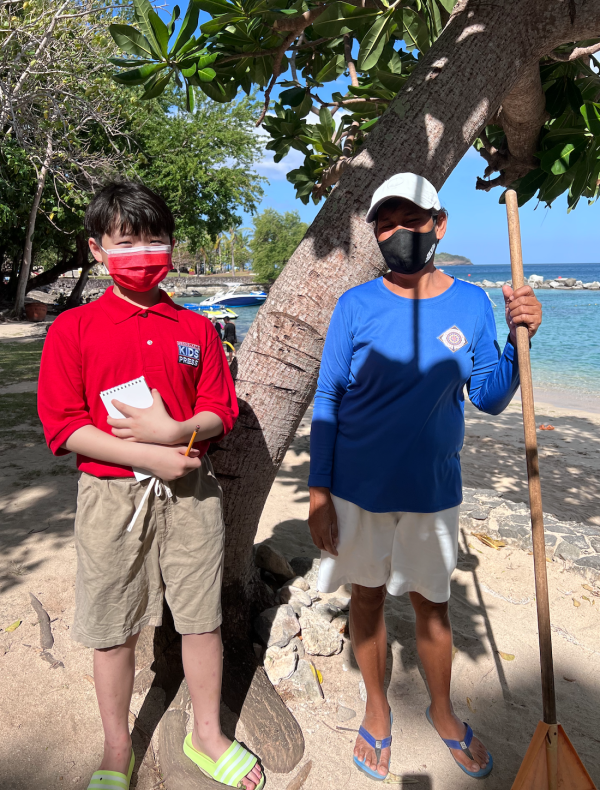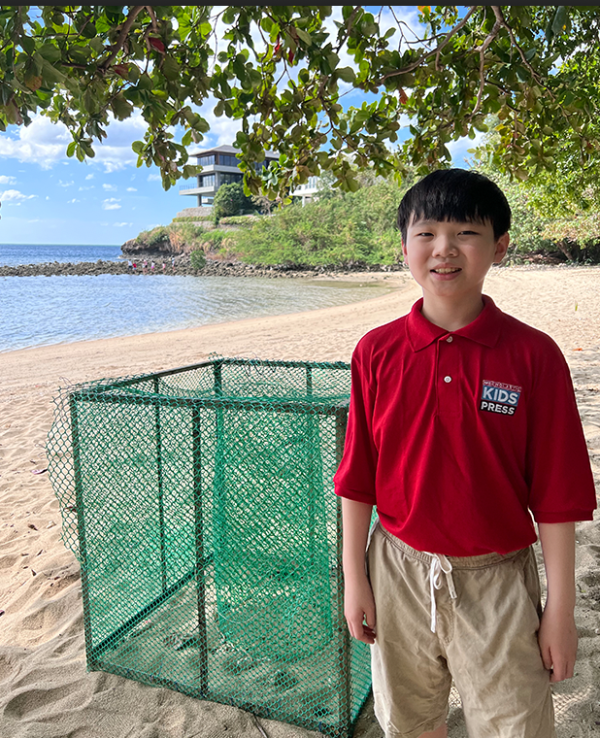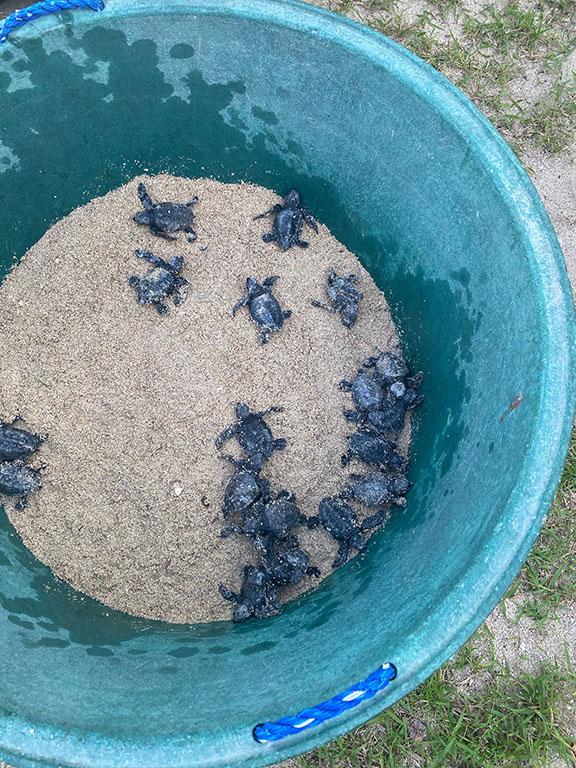KID REPORTERS’ NOTEBOOK
Saving Sea Turtles in the Philippines


Dylan talks with Juanito Corpuz, a resident of Punta Fuego who cleans the beaches and protects nesting sea turtles.
According to the World Wildlife Fund, sea turtles are endangered globally because of human activities. These ancient sea creatures have existed for more than 100 million years, since the age of the dinosaur. They play an important role in maintaining the balance of marine habitats.
In Punta Fuego, which is located on the island of Luzon in the Philippines, sea turtles lay eggs on beaches each year. In 2002, local residents started an environmental organization to protect the pawikan (turtle) eggs from tourists and predators.
To learn more about the effort, I spoke with Juanito Corpuz, a resident who cleans the beaches and takes care of the eggs. He explained that two sea turtles lay 60 to 100 eggs on the beaches each month.
“They usually come at 5 a.m. to lay their eggs,” Corpuz said. Female sea turtles’ nesting season ranges from one to nine years, and they always return to the same spot.

A green net protects nesting sea turtles from careless tourists.
TOURISTS AND TYPHOONS
Because most people don’t know what the eggs look like, they can easily be trampled. Corpuz monitors a closed-circuit television (CCTV) to search for the eggs. Once they are found, he places a green net around them for protection.
“Sea turtle eggs look like chicken eggs, only softer,” Corpuz explained. “We usually see them laying eggs on the CCTV, so we can fence off the nest. After all of the eggs hatch in a specific location, we release them into the sea.”
Despite the protection provided by Corpuz and other residents, there are some dangers, including typhoons, that can’t be prevented. In September 2021, Typhoon Jolina caused the eggs on several beaches to rot after the nests were submerged in sea water.
Curious tourists sometimes break the eggs inside the nests despite the fences. Use of the CCTV helps prevent such damage. Penalties for deliberate harm, including denial of entry, are also enforced.

Newly-hatched sea turtles are protected before being released into the wild.
